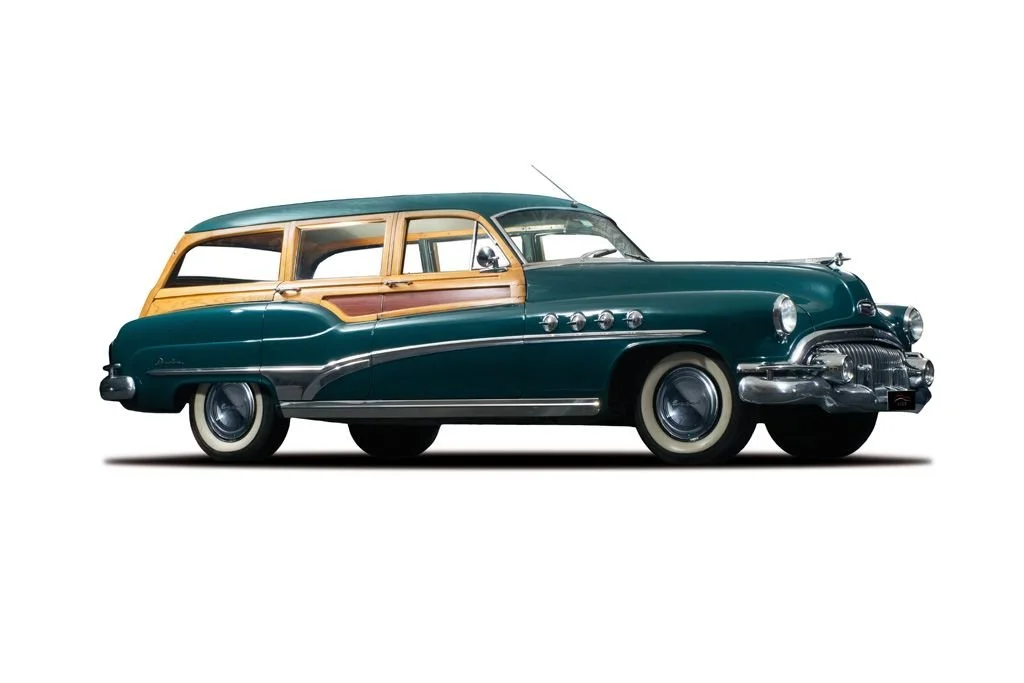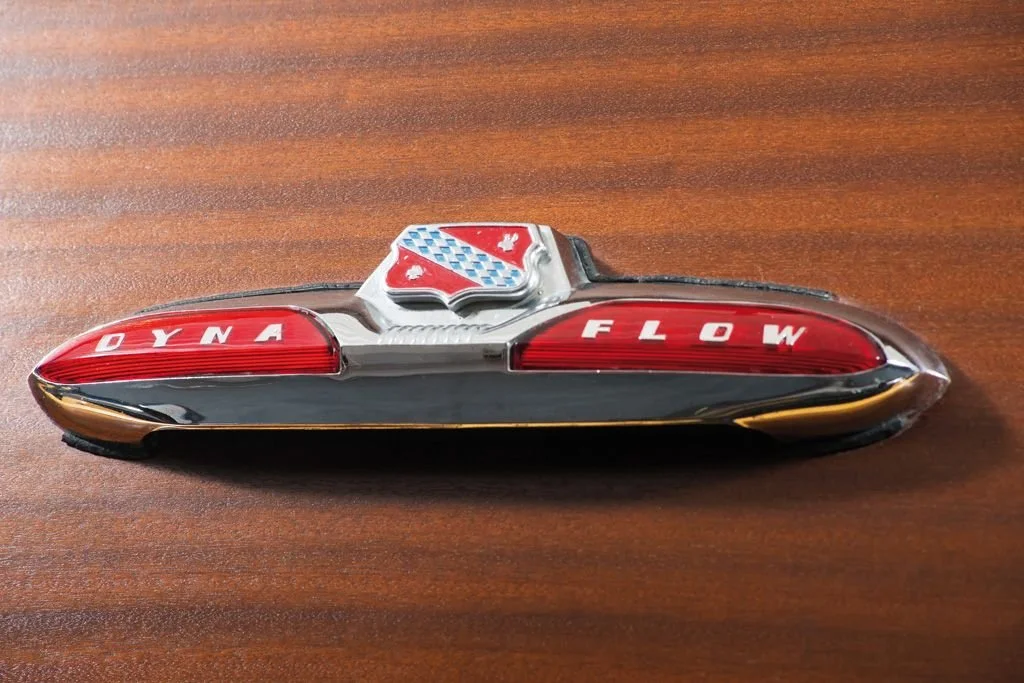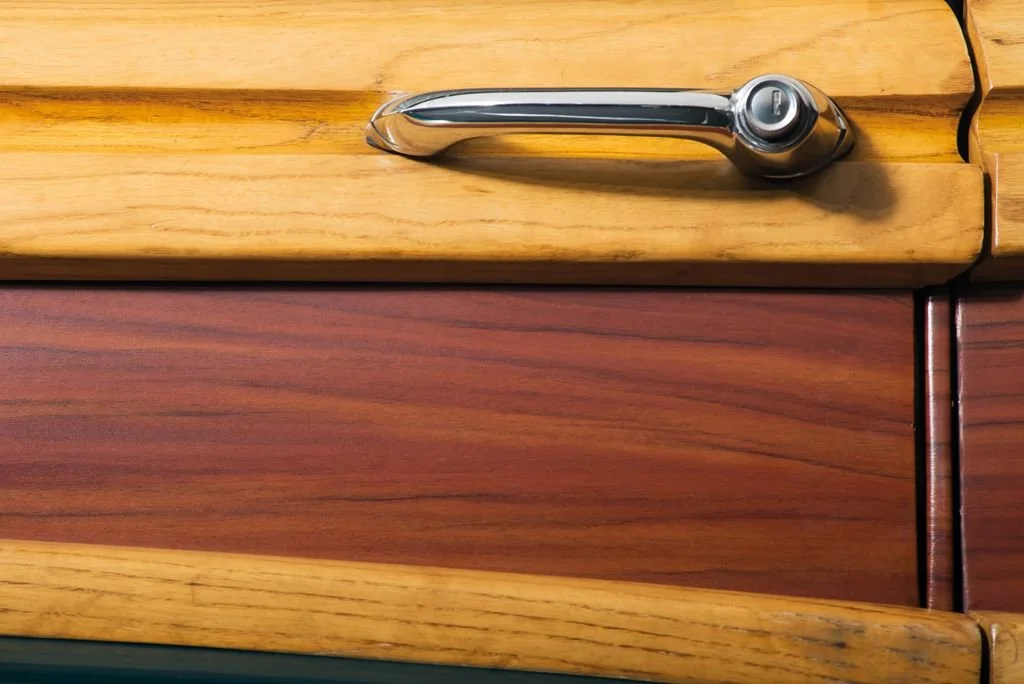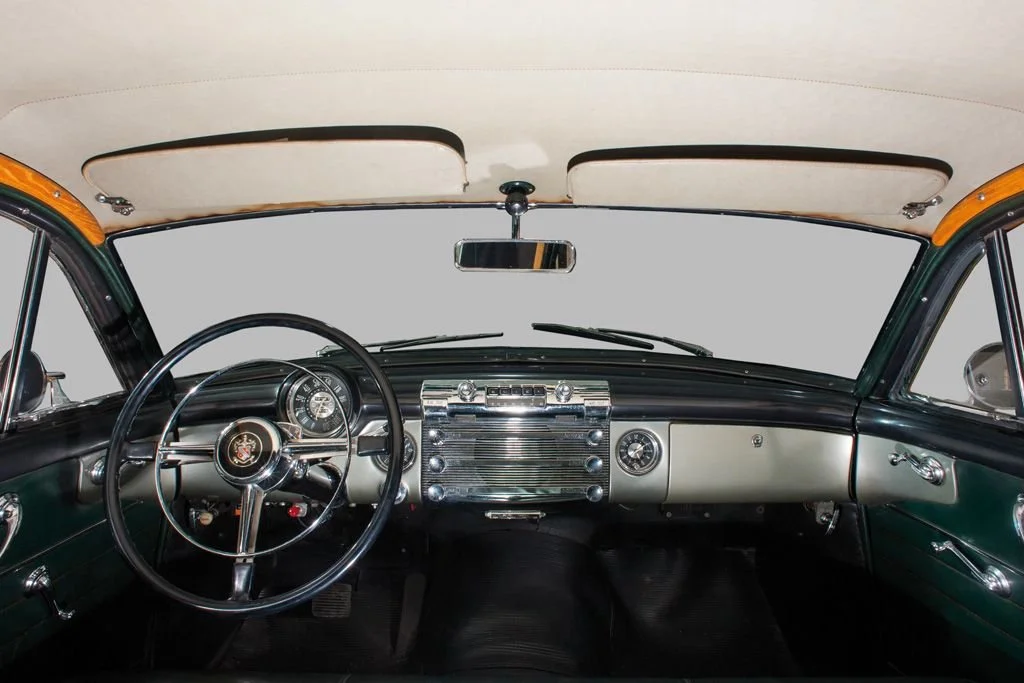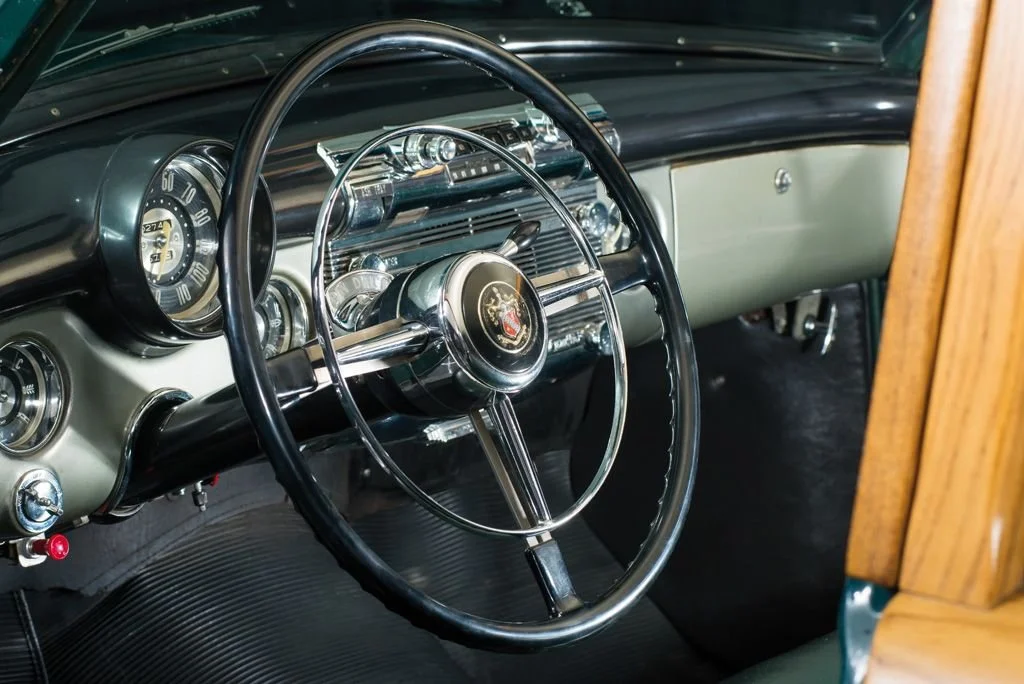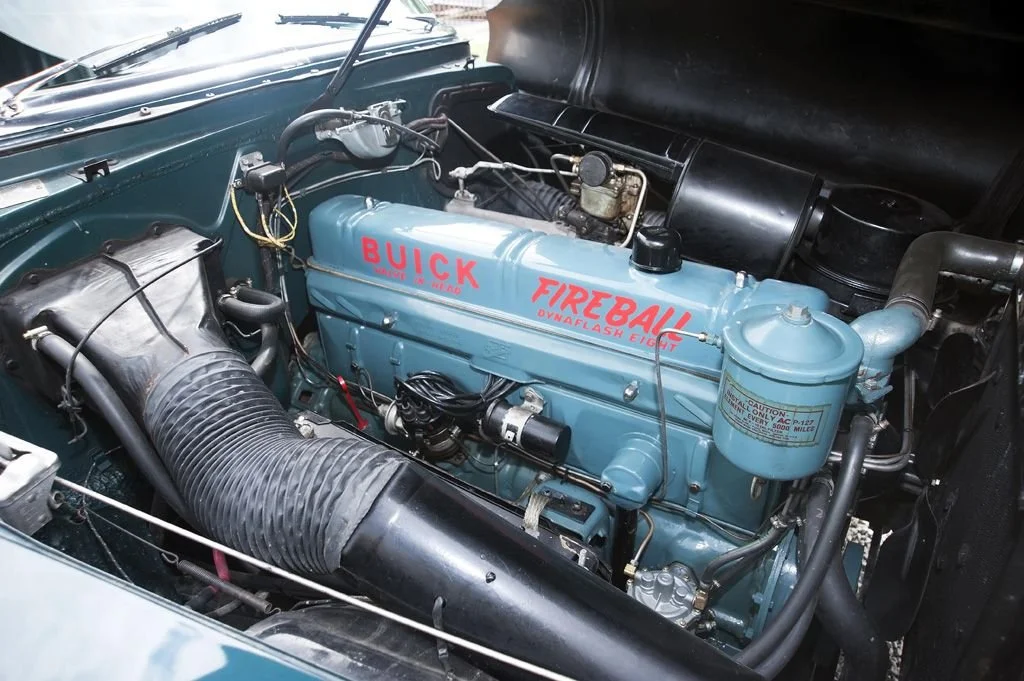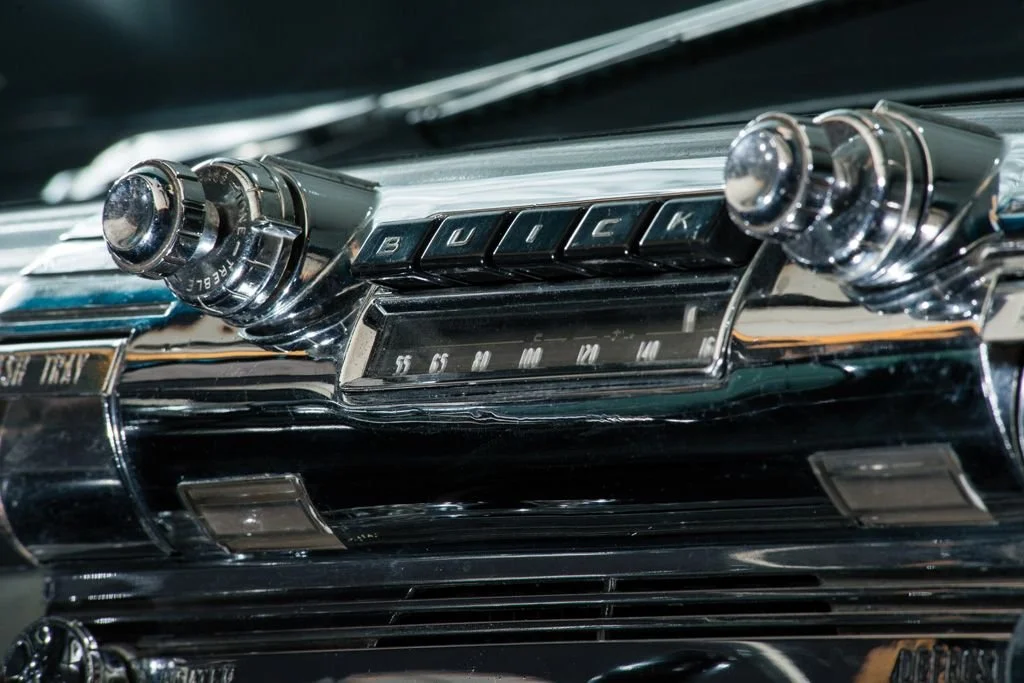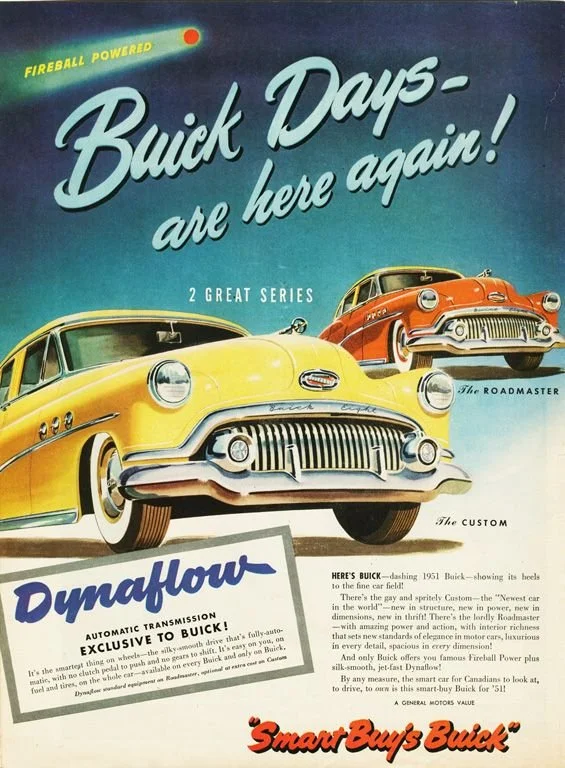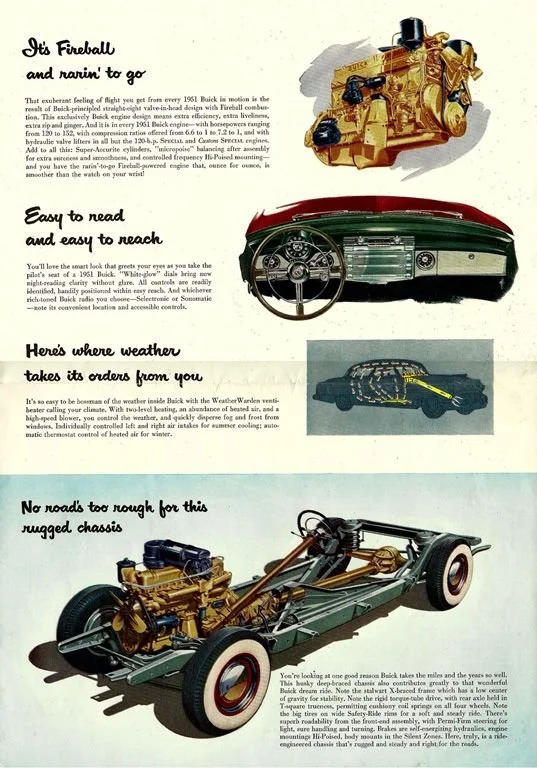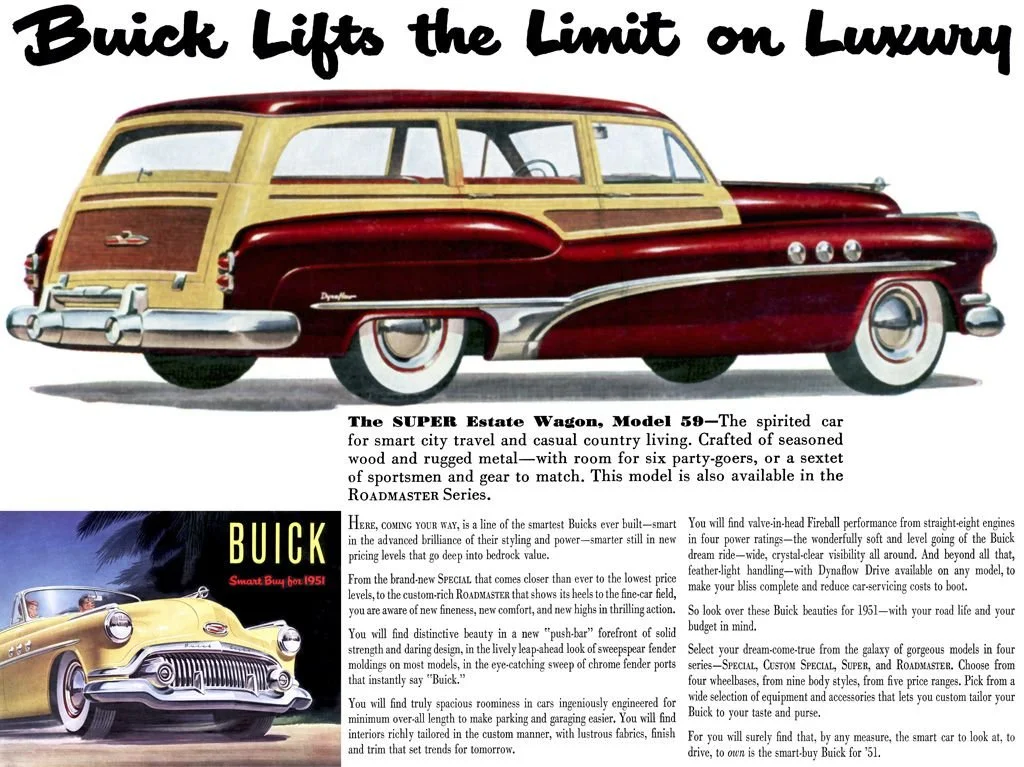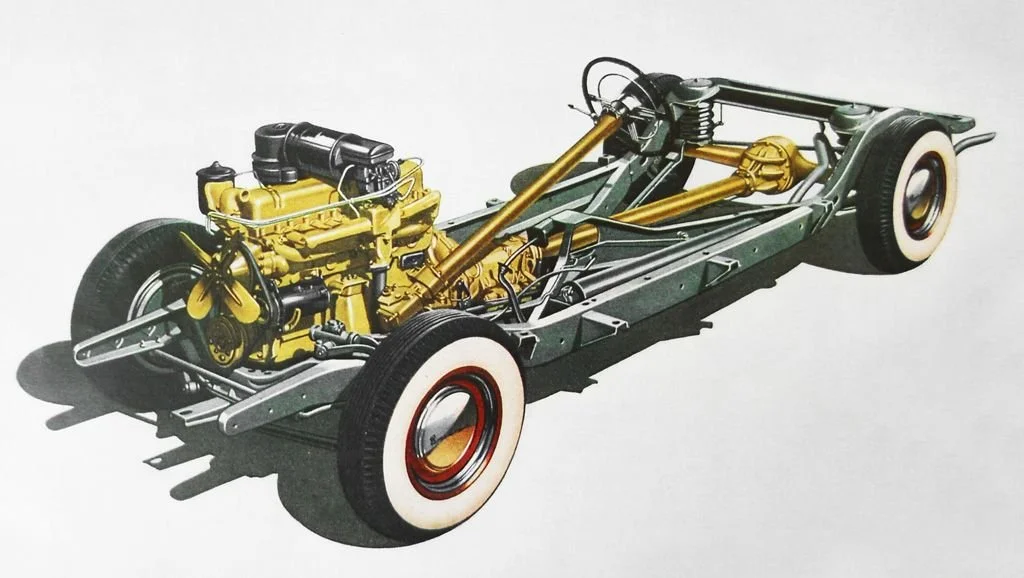-
Today, thanks to the constant activity of the tenacious collector Nicola Bulgari, this is one of the very few Buick Roadmaster Estate Wagons still in existence.
This imposing Buick, bought new in 1951 in New York State by Mary Flagler, the last member of one of the most important business dynasties in the States, motored along American highways for many years before coming to Rome. In 1998 the car arrived in Italy complete, but needing careful restoration. The starting point was good: the interior and the bodywork were well preserved, perhaps partially reconditioned compared to the original by an earlier restoration done in the States. The chrome was still good, while the parts in wood (the bearing structure in ash and the panels in mahogany) underwent a complete restoration in the USA. The most important work, carried out in Italy, concerned the reconstruction of the lower bodywork, damaged by the frequent use of salt during the long New York winters. Together with the complete restoration of the Fireball Eight engine, the transmission Dynaflow was reconditioned.
Driving the Roadmaster is very relaxing and gives great satisfaction. The engine and transmission guarantee an extremely pleasurable drive, while the steering gives no cause to regret the lack of a hydraulic system and the soft suspension has been designed to give the most comfortable ride. When driven long distances this Buick Roadmaster Estate Wagon expresses the best of the classic made in the USA construction philosophy. -
Company
General MotorsWheelbase
126.25inInterior trim
Green leatherBrakes
front and rear drumsMake
BuickLength
211inEngine
inline 8 - 320.2cidTires
8.00x15Model
Roadmaster Estate WagonWidth
80inCarburetor
1 Carter 2-barrel 726Original Price
$3,203Body style
4-door station wagonWeight
4470lbsHorsepower
152hp @ 3600rpmProduction
679Model year
1951Exterior paint
Geneva GreenTransmission
Dynaflow automatic -
How was an exclusive car created sixty years ago? By a company such as Buick, already producing well-made and elegant cars at the beginning of the 50’s. In 1947 these elements contributed to the debut of a completely new model: the Buick Roadmaster Estate Wagon; a “woody wagon”, with ample space, but in price and target market, it was certainly not aimed at commercial use. Produced from 1936, the Roadmaster series represented for Buick, and those fortunate enough to buy it, the ultimate model for finish, size and engine.
After the World War II, in 1946 Buick relaunched some of the models offered from the first months of 1942 including, naturally, the Roadmaster (series 70). The plant in Flint, Michigan brought out a range of cars able to satisfy diverse tastes and needs; the Special, Super and Roadmaster series offered a variety of body styles from the sedan to the convertible, including the station wagon in wood, the true symbol of the American lifestyle of the era. The Estate wagons (already included in the Super range of 1940) from ’47 were also assembled on the chassis of the exclusive Roadmaster. For the delicate execution of the shell in wood and sheet metal, Buick called on the Ionia Manufacturing Company that specialized in special projects for the automobile industry. Included in the Roadmaster series, the Estate Wagon version followed the trend, updating the style and mechanics year after year as required by the parent company.
In 1948, as an option to the classic Synchromesh manual transmission, the Roadmaster was fitted with the Dynaflow automatic transmission; this innovation enormously improved the pleasure of driving and increased the appeal for elite and female drivers.
After the Buick 1949 model designed by Ned Nickles, the limited and extremely costly production of the Roadmaster Estate Wagon continued undisturbed into the 50’s. For the first time the famous air vents called “ventiports” or “portholes” appeared on the side of the front fenders, nowadays a distinctive sign of a 50’s Buick. These were four per side in the Roadmaster series and three in the “minor” series.
The optimism of the 1950 model presented a front grill with a huge visual impact formed by nine chrome “teeth”. In 1951 the front of all the vehicles went back to a more classic style that was more suitable to the elegant character of a Buick.
The interior was entirely in leather and the car was propelled by the quiet 152 horsepower engine “Fireball Eight” and equipped with a Dynaflow transmission, available on all the Roadmasters produced from 1949.
The chassis had a lowered center of gravity (to increase stability) and the suspension was modernized with a system of springs (front and rear), taking the place of the archaic leaf springs that the rest of the automobile industry continued using for a long time.
The last real wood and metal bodywork for the Buick Roadmaster came out of the Ionia Manufacturing factory in 1953. From 1949 to 1953 the Buick wagons, assembled in both the Super and Roadmaster series, numbered 12,791, of which only 2,760 received the chassis of the Roadmaster.
There were just 679 of the Buick Roadmaster Estate Wagon 1951 models produced, making it very rare and much sought after.

